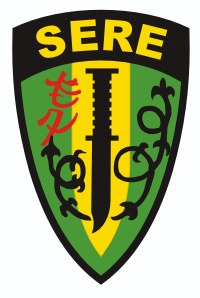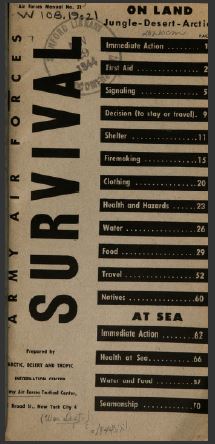



Survival, Evasion, Resistance, and Escape (SERE) is a training concept originally developed by the United States during World War II. It is best known by its military acronym and prepares a range of Western forces to survive when evading or being captured. Initially focused on survival skills and evading capture, the curriculum was designed to equip military personnel, particularly pilots, with the necessary skills to survive in hostile environments. The program emphasised the importance of adhering to the military code of conduct and developing techniques for escape from captivity. Following the foundation laid by the British, the U.S. Air Force formally established its own SERE program at the end of World War II and the start of the Cold War. This program was extended to include the Navy and United States Marine Corps and was consolidated within the Air Force during the Korean War (1950–1953) with a greater focus on "resistance training."
In 1940, the British government established the Special Operations Executive (SOE) to train operatives in evasion and resistance techniques, supporting resistance movements in occupied Europe. These efforts throughout the 1940s laid the foundation for formal SERE programs, which focused on survival, evasion, and resistance, ensuring that military personnel were equipped to perform effectively under potential captivity scenarios.
During the Vietnam War (1959–1975), there was clear need for "jungle" survival training and greater public focus on American POWs. As a result, the U.S. military expanded SERE programs and training sites. In the late 1980s, the U.S. Army became more involved with SERE as Special Forces and "spec ops" grew. Today, SERE is taught to a variety of personnel based upon risk of capture and exploitation value with a high emphasis on aircrew, special operations, and foreign diplomatic and intelligence personnel.